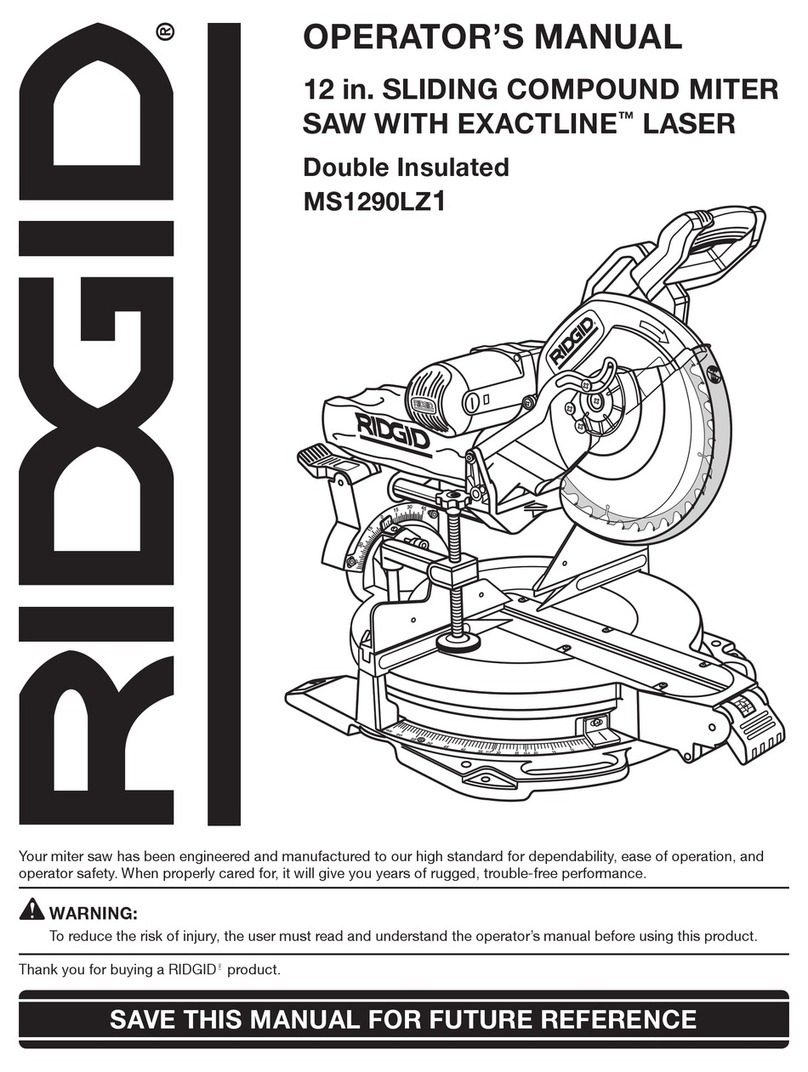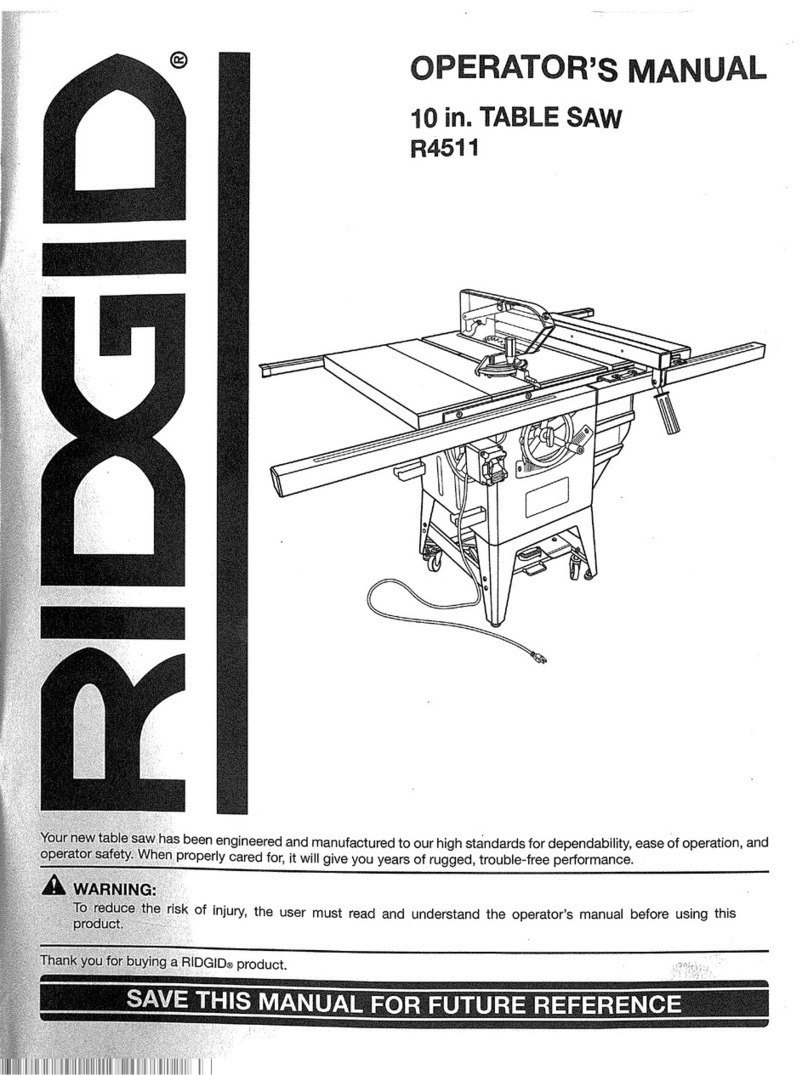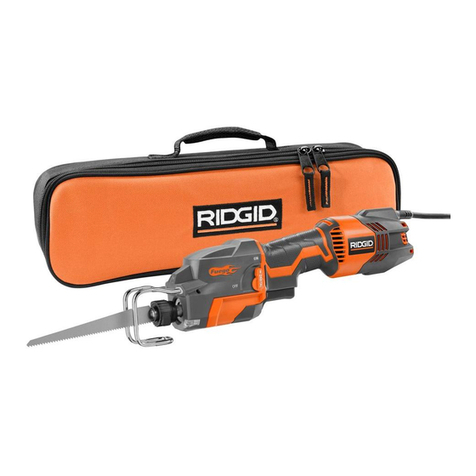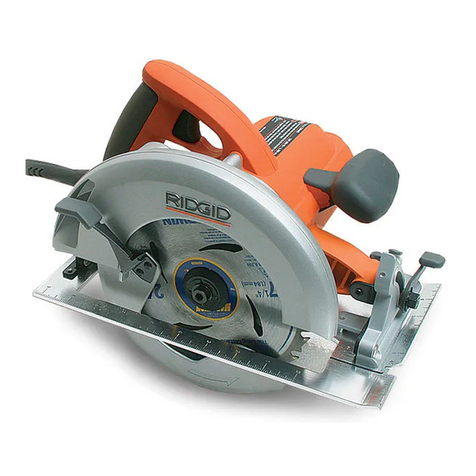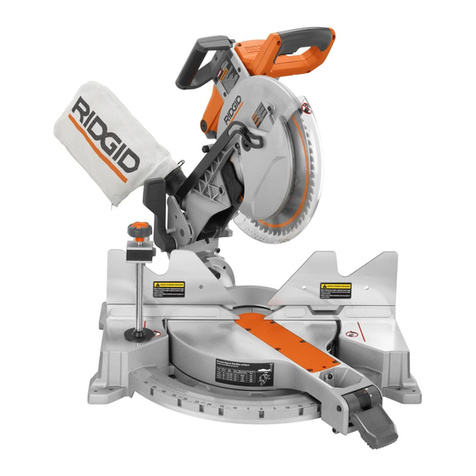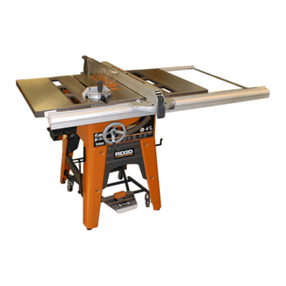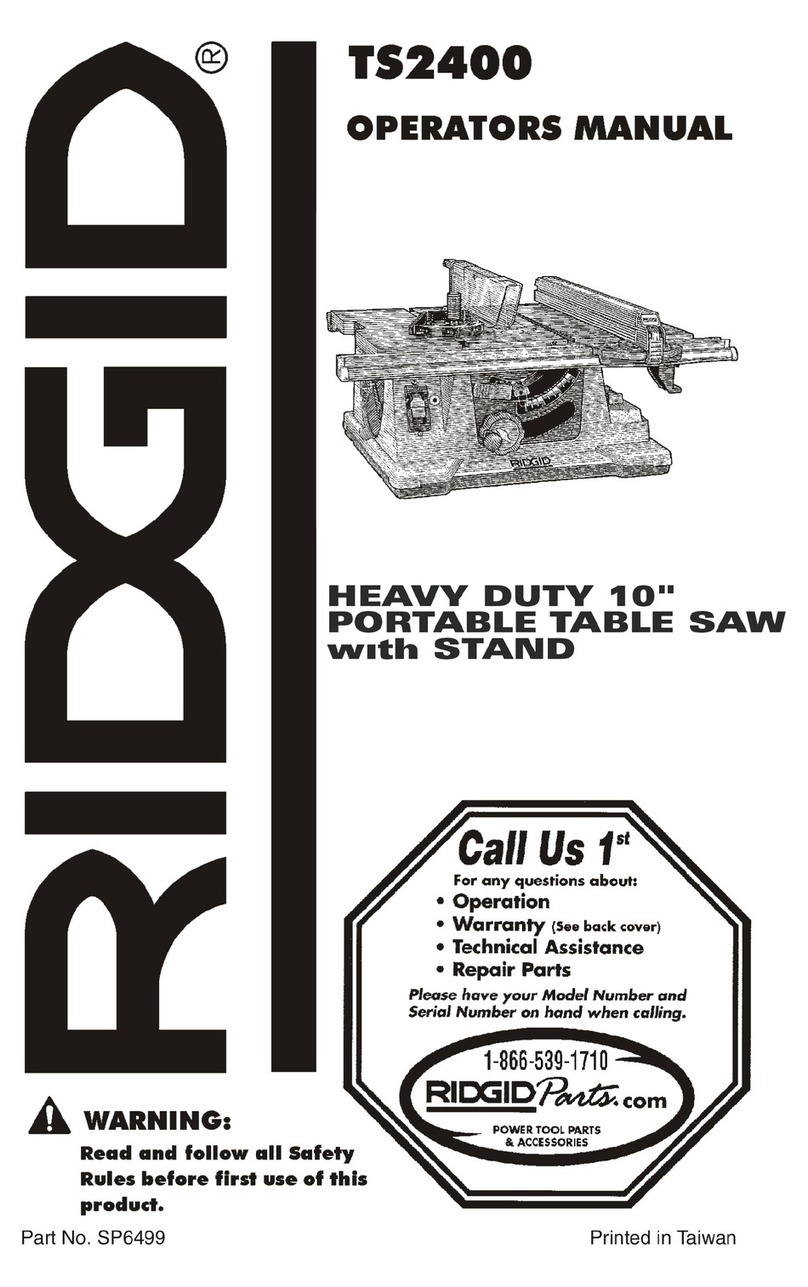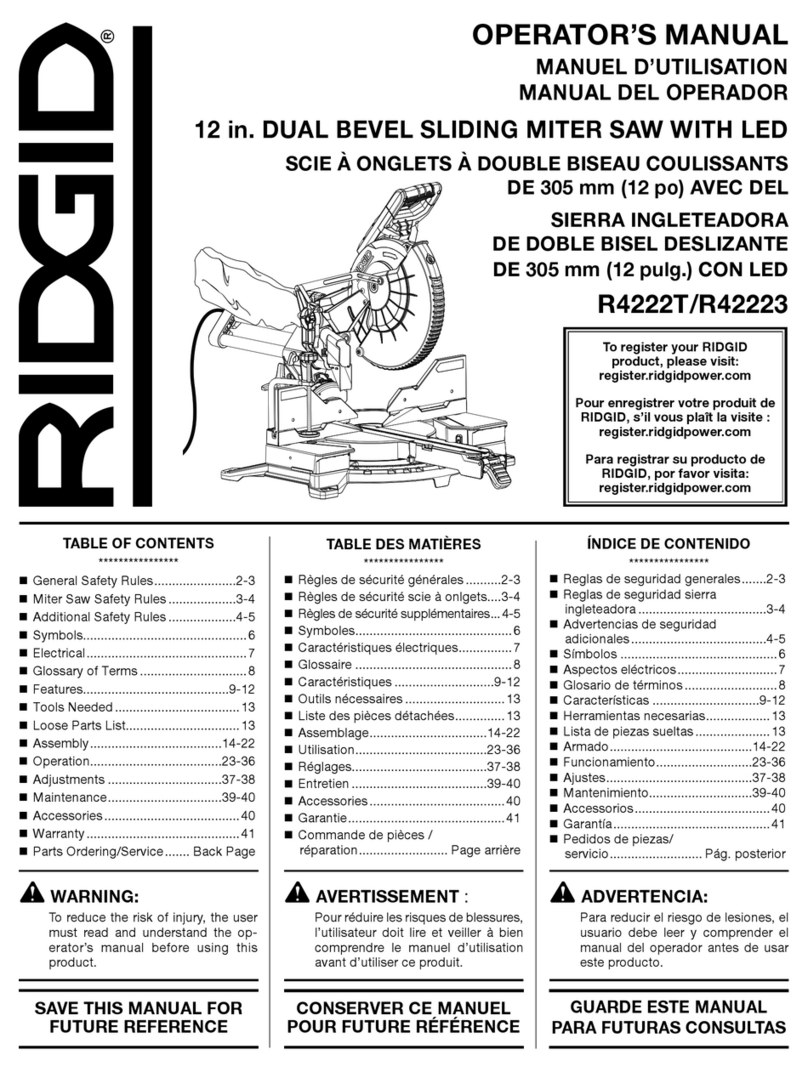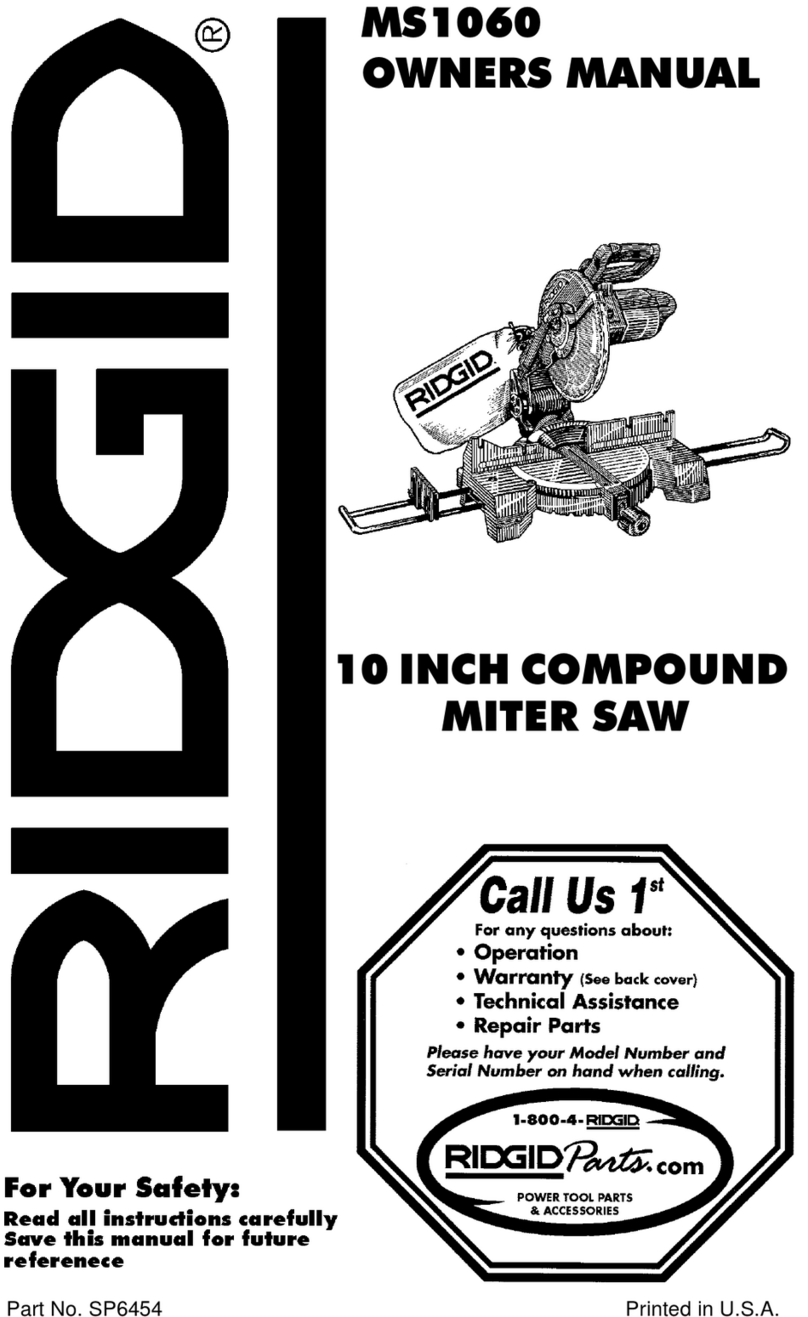
•Never hold the workpiece in your hands or across
your leg while cutting. Always secure the work
piece in an appropriate pipe vise and properly
support. It is important to support the work properly to
minimize body exposure, blade binding, equipment
and material falling or loss of control.
•Do not start the saw with the saw blade touching
the work piece. et the blade reach full speed
before carefully feeding it into the work piece. The
blade may bind, walk or kickback if the tool is started
with the blade in contact with the work piece.
•Do not reach into the chip chute. Do not insert
tools or other objects into the chip chute. Do not
block chip chute. This will reduce the risk of cutting,
entanglement and striking injuries.
•Do not reach inside the pipe. The guard cannot
protect you from the blade inside the pipe.
•During set-up, always confirm the saw is locked in
position on the clamp with the clamp 10 degrees
from vertical. This will reduce the risk of unintended
movement of the saw during use.
•Be aware that the saw gear box can be hot from
use. Do not touch gearbox during or after operation to
reduce the risk of burns.
•Properly route and position the cord during use to
reduce the risk of cord damage and electrical
shock. If the cord is cut, the saw, pipe or other objects
may be electrically charged. Make sure the saw is
controlled and unplug the cord from the outlet.
•Read and understand these instructions and the
instructions and warnings for all equipment and
materials being used before operating this tool to
reduce the risk of serious personal injury.
•Do not modify PipeSaw or use for any other pur-
pose. Other uses or modifying the saw for other appli-
cations may damage the tool, damage the attachments
and/or cause personal injury.
•Only cut empty pipe. Do not cut pipe with any type of
contents to reduce the risk of electrical shock and
other hazards.
•Avoid breathing of dust created from pipe cutting.
Some dust created may contain chemicals known to
cause cancer, birth defects or other serious personal
injury. Consider the pipe material and coatings when
determining appropriate respiratory protection, includ-
ing things such as lead based paint.
Your risk from these exposures varies, depending on
how often you do this type of work and the concen-
tration of dust. To reduce your exposure to these chem-
Specic Safety Information
WARNING
This section contains important safety information
that is specic to this tool.
Read these precautions carefully efore using the
PCS-500 Transporta le Pipe Saw to re duce the risk
of electrical shock or other serious injury.
SAVE ALL WARNINGS AND INSTRUCTIONS
FOR FUTURE REFERENCE!
Keep this manual with machine for use by the operator.
PipeSaw Safety
Keep hands away from cutting area
and blade. Allow parts to come to a complete stop
before handling the tool or pipe. This will reduce the
risk of cutting and entanglement injuries.
•Keep your hands on saw handles and firmly control
during use. This provides better control of the machine
and cutting process. If both hands are holding the saw,
they cannot be cut by the saw blade.
•Always wear appropriate eye protection and hear-
ing protection. Cutting tools can break or shatter.
Cutting produces chips that can be thrown or fall into
eyes. Cutting produces high noise levels that over
time can damage your hearing.
•Always wear appropriate personal protective equip-
ment. Face shields, long sleeves, safety shoes, hard
hat, and other equipment as appropriate will reduce the
risk of injury.
•Do not wear loose clothing when operating PCS-500
Transportable Pipe Saw. Keep sleeves and jackets
buttoned. Do not reach across machine. Clothing can
be caught by the machine resulting in entanglement.
•Keep bystanders clear of work area. Guard or bar-
ricade minimum of 9 feet (2.7 meter) around the
working area. Chips or broken saw teeth can be thrown
and cause injury beyond immediate area of operation. A
guard or barricade that provides a clearance around the
work piece will reduce the risk of injury.
•One person must control the work process and the
saw ON/OFF switch. Only the operator should be in
the work area when the machine is running. This helps
reduce the risk of injury.
•Properly support work piece and PipeSaw Trans-
portable Pipe Saw. Make sure the saw clamp is
secure to the work piece. This will reduce the risk of
striking and crushing injuries from tipping and falling
pipe and equipment.
999-995-226.10 REV. A4
PCS-500 Pi eSaw
DANGER
